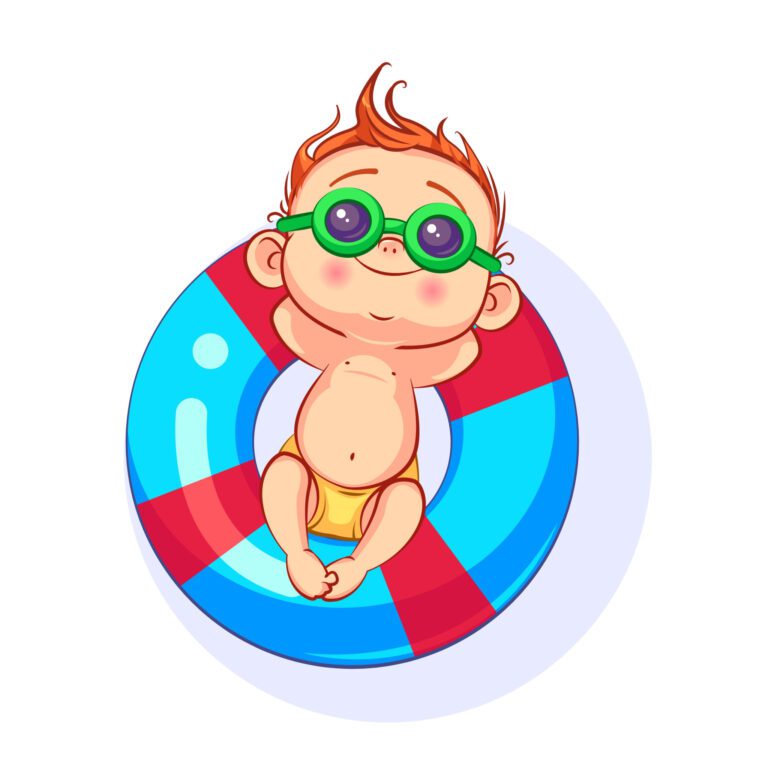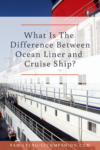People often assume that all cruise ships and all big passenger-carrying ships are ocean liners. They are not! Those terms describe two different types of vessels.
While sometimes used interchangeably, the distinctions between an ocean liner and a cruise ship are apparent. They are two separate types of ships that, although comparable, provide a world of difference in size, structure, and experience.
So what exactly is the definitional difference between ocean liner and cruise ship?
The only way to transport people and goods across the seas for centuries was by boat until the 1950s. Thus, the purpose of ocean liners was to carry people between continents in a timely and consistent manner, regardless of the conditions at sea.
This contrasts sharply with cruises, which carry tourists to pleasant locales on leisurely cruises. However, cruise ships and ocean liners share few design elements.
Let’s take a closer look at these two types of ships.
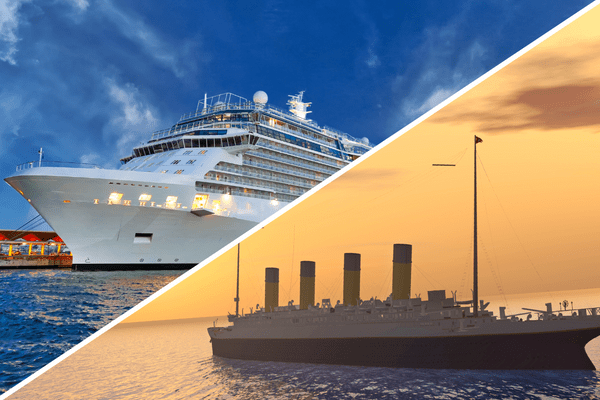
The Main Difference Between Ocean Liner and Cruise Ship
Ocean liners are built for the primary purpose of traveling in straight lines across a wide area of open ocean from point A to point B. An example would be ocean liners making the trans-Atlantic journey between North America and Europe. It is comparable to taking a commercial flight across the ocean but much slower.
A cruise ship, however, is a passenger ship used for leisure and recreational travel. The ship may make multiple stops during its travel to the final destination. And, sometimes, the starting destination and final destination are the same places. Plus, the voyage, amenities, activities, and entertainment options offered, are integral parts of the cruise experience.
The maximum size of a cruise ship has climbed from 73,000 tons to 236,857 tons between 1987 and 2022. But what distinguishes these vessels from the earlier ocean liners is their design, not their size.
The boxy design of today’s cruise ships and their more recent, uncanny resemblance to hotels have made them famous (see photo below). This is all a result of the change in the construction’s goal. In particular, cruise companies require ships to provide the greatest facilities of the highest caliber at the lowest possible cost to the largest number of passengers.
Modern cruise ships have short decks, low free boards, and extremely tall constructions that seem to stop in mid-air. There is plenty of room for various amenities thanks to these architectural decisions.
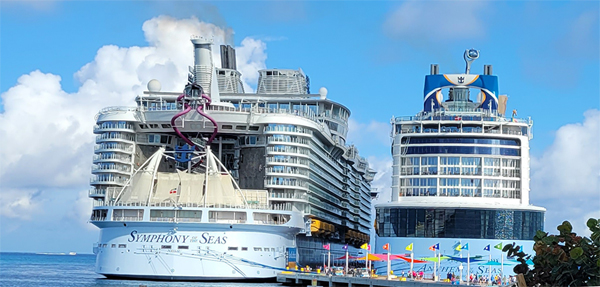
However, it also means that today’s purpose-built cruise ships struggle in adverse weather conditions. Cruise ships manage weather differently than ocean liners did in the past, which allowed ocean liners to go through some of the most severe conditions the ocean could offer. During the Atlantic hurricane season, cruise ships frequently cancel or change ports of call to escape inclement weather.
Differences Between Ships
As was said in the previous paragraph, one of the most significant differences between ocean liners and cruise ships is their physical attributes because they serve very different functions. But there are more differences than that, including the following:
Primary Function
Ocean liners were developed for numerous uses, such as moving people, cargo, containers, pallets, and enormous quantities of products from a port to port. In contrast, cruise ships were designed for leisure activities.
Shape
A cruise ship is more exposed to weather variations because it sits higher up in the ocean (in comparison). With a pointed bow, an ocean liner lies lower in the sea. This increases its ability to survive bad weather. The bow is often longer to shield ocean liners from waves.
Hull Thickness
While an ocean liner is built to be exceptionally thick to increase durability and withstand the weight it is carrying, a cruise ship has a more moderate thickness. Compared to what is found on a cruise ship, the steel is frequently several inches thicker on an ocean liner.
Speed
Because there are passengers on board, cruise ships travel slower. Rapid transit through the sea has a couple of drawbacks. An ocean liner goes fast through the water. Most ocean liners have set itineraries that must be adhered to, necessitating increased speed. On an ocean liner, schedules must be kept regardless of weather fluctuations.
Use
The onboard experience on a cruise ship is luxurious, enjoyable, and elegant because it is built for leisure and accommodates thousands of passengers. The ambiance varies on an ocean liner built and designed only for hauling goods.
Lifeboat Location
Because ocean liners encounter high seas, especially during the winter, the boat deck is higher to the ship’s top, allowing the vessel to be more sheltered from dampness and moisture.
Design Difference
Ocean liners, as previously indicated, have a pointy bow and a lower profile in the sea. They can better deal with harsh weather and reduce the impression of movement on board. In contrast, cruise ships are higher and less aerodynamic.
Ship Design
Cruise ships can handle some amount of severe weather, but it is not pleasant for the guests. But in contrast, because of ocean liners’ design, the captain will be capable of successfully navigating through a severe storm.
Generally, a cruise ship will slow down when faced with adverse weather or change course entirely, while ocean liners will continue at full speed.
In terms of materials, ocean liners have stronger hulls made of robust steel. Cruise ships are often constructed of steel too, but are not as sturdy or as thick as ocean liners.
Speed Differences
Ocean liners are built to travel more quickly than cruise ships. The fastest ocean liner ever is the SS United States, which sailed at 39 knots, approximately 45 miles per hour. The Queen Mary 2 travels at 30 knots and is now the fastest active ocean liner (about 35 miles per hour).
The speed of cruise ships has recently increased. Some cruise lines provide repositioning trips that depart and return from various ports. Royal Caribbean’s Harmony of the Seas runs at full speed at 22 knots.
The Jade, Pearl, Dawn, and Gem from Norwegian Sail Line can ship at 25 knots or approximately 29 miles per hour. The Norwegian Jewel, which can reach a top speed of 26 knots, is currently the company’s fastest vessel to date.
Itineraries
One of the more telling distinctions today between sailing on an ocean liner and sailing on a cruise ship is the itinerary. As explained above, the primary purpose of an ocean liner is to transport people from point A to point B. Thus, if you book a sailing on the Queen Mary 2 (an ocean liner), the sailing will be relatively short (7 to 9 days) and will consist entirely of sea days. While you will have luxurious accommodations and a wide array of activities to experience, you will not have any interim port stops.
In contrast, a transatlantic sailing on a cruise ship will include intermediate stops and a longer transit time of 13 to 15 nights (or more). For example, a 14-night transatlantic repositioning sailing on Celebrity Beyond may start in Fort Lauderdale and end in Rome, with five additional stops along the way.
Why Aren’t More Ocean Liners Being Constructed?
The Queen Mary 2 was the final great ocean liner to be built in 2003. Since cruise ships can accomplish the same goals, there is no longer a need for these vessels. The latest cruise ships can travel great distances and sail safely in bad weather.
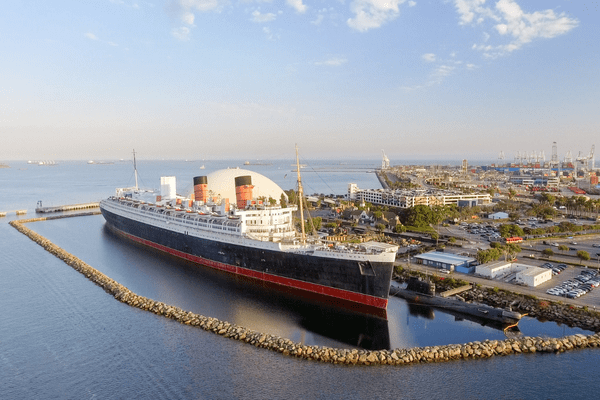
Cruise ships, which are currently testing the boundaries of ship design, may be to blame for the recent fall of ocean liners. More advanced and larger vessels are now being constructed. Moreover, travelers truly focused on crossing the Atlantic ocean efficiently also have a wide variety of economical flight options.
The future of the ocean liner remains a mystery, so there may be no reason for the differentiation in the years to come.
Closing Thoughts
Even though the terms cruise liner and ocean liner may sound like they are the same type of ship, they both serve different purposes and have different features. The main difference between ocean liner and cruise ship, is that cruise ships focus on leisure, recreation, and the overall travel experience rather than on efficient transportation.


